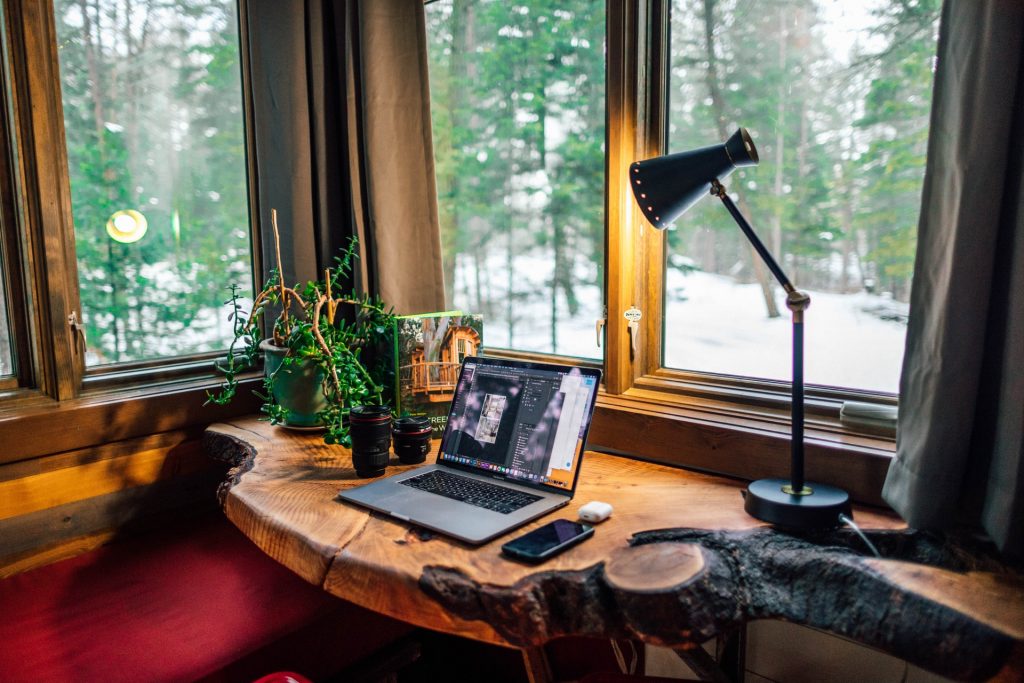About 20% of people are stressed because they are struggling to balance work with their personal life. For many of us, the Covid-19 pandemic has made this even more difficult. Family life in itself can be chaotic, let alone when your home becomes your workplace.
Worldwide lockdowns disillusioned many people who had been dreaming about working from home. But, remote work can still be fun. The key is to set up a proper home office. And, strictly speaking, it doesn’t have to be inside your home.
Why Build Your Own Garden Office?
If you’ve never undertaken a major home improvement project, building a garden office might seem intimidating. But a garden office doesn’t have to be as expensive and difficult to build as you might think. For instance, a log cabin is easier and cheaper to construct than a conventional building, and it makes for a great garden office.
You have the options of hiring someone to build a log cabin office for you, buying a prefabricated cabin, or building one yourself. Even if you are not so skilled at carpentry, there are DIY log cabin kits out there that are fairly simple to use.
Purpose and Orientation
The primary function of your garden outbuilding should dictate its position and orientation. Since you will mostly be using it as an office, north-facing windows should work best. They provide the most consistent level of light throughout the day and minimize direct sunlight. To reduce summer glare, you can also consider veranda structures or roof overhangs.
Since people keep computers and other expensive work equipment in their garden offices, they are an easy target for burglars. You should consider installing an alarm system linked to the house as well as window and door locks.
Your garden office doesn’t necessarily have to serve a single purpose. It can be a flexible addition to your house. You can adapt it to be an entertainment area with a bar and a TV, or you can use it as an extra guest room.
Adapting your garden office to your specific needs shouldn’t be an issue as long as you plan out everything before you begin the work. Making modifications to an existing log cabin can be tricky, so you should have a clear idea of what exactly you will use the cabin for and how big it needs to be.

What Style Do You Have in Mind?
Whenever you are building any type of structure, you have many choices when it comes to style. Do you want a more contemporary look, or do you prefer more traditional log cabins?
Here are a few different looks you can consider:
- A traditional log cabin that looks like an old grain store is a lovely but simple addition to any garden. For an even more traditional appearance, you can mount it on staddle stones.
- You can make a contemporary-looking garden office out of an old shipping container. The strong and robust metal shell of a container makes for a durable and stylish working space. If you are not up for a DIY challenge, do know that there are businesses that specialize in making modified garden studios out of such containers.
- A shepherd’s hut can also make for a great garden office. Since it has its own wheels, you can move it around your property as you please or you can take it with you when you move. You can even fit it with a log burner.
- If you want a larger office, or if you have an awkwardly shaped garden, building a custom-designed cabin is an excellent choice. It can be designed to fit around an obstacle such as a tree stump or a pond. While a bespoke cabin is a bigger investment, it can be a lifetime, tailor-fit solution for your specific needs.

Planning Permission
If you want to build a garden office, getting planning permission can be a bit of a chore. It all depends on where you live and how big you want your office to be.
In the US, the UK, and Ireland, smaller outbuildings are classified as permitted development. However, it’s best to contact your local planning authority to find out what exactly is permitted before you start building a garden office.
Heating and Insulation
Apart from electrical wiring, insulation is what separates a garden office from a shed. In most climates, a log cabin is the best solution for a garden office. Timber is a better thermal insulator than concrete and metal.
If built right, a log cabin office will be warm in the winter and cool in the summer. But, if not, your log cabin office may become vulnerable to air leaks during the settling process. Using caulking is one way you can prevent them.
It is also important to stain and perform maintenance on your log cabin twice a year in order to ensure the wood will preserve its insulating properties and prevent the growth of mold and mildew. Installing double-glazed windows is also a good idea.
Kevin has gone through an extensive home renovation with his son, which he has both thoroughly enjoyed, and dreaded every morning. He is now the proud owner of half his dream house (the other half has been waiting for spring). You can read more of Kevin’s work on PlainHelp.
